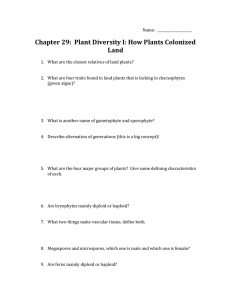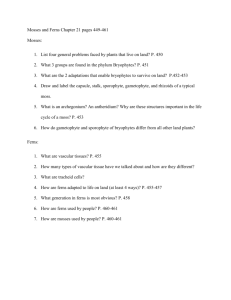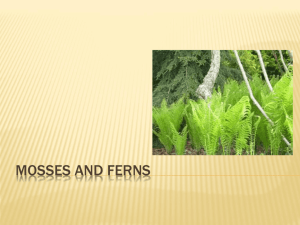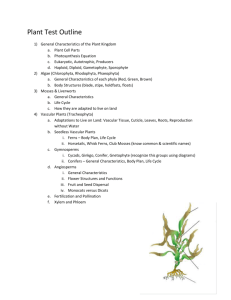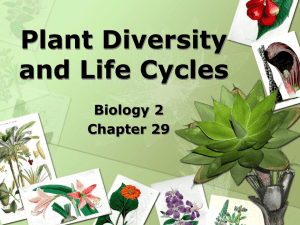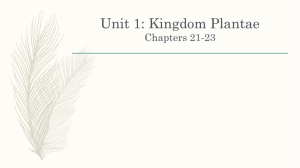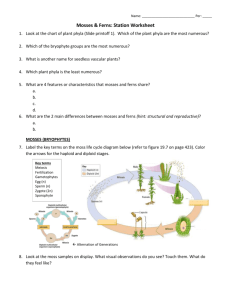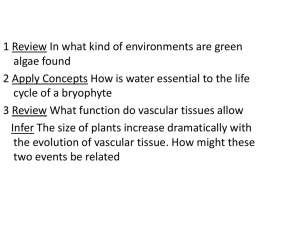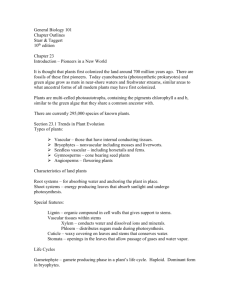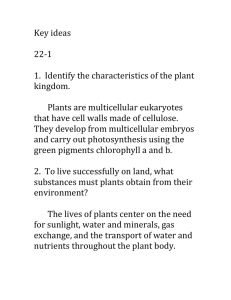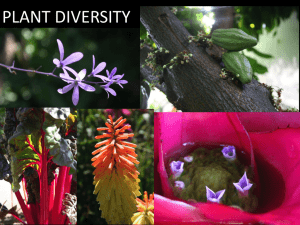Fig. 22-1 - ScienceToGo
advertisement
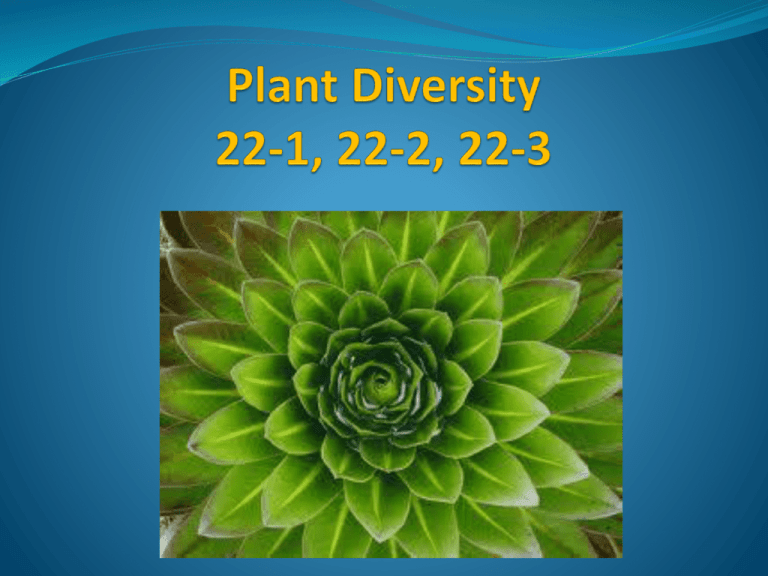
Plants are multicellular eukaryotes that have cell walls made of cellulose. (Fig. 22-1) A. They develop from multicellular embryos and carry out photosynthesis using the green pigments chlorophyll a and b. B. Most are autotrophs (some are parasites or saprobes that live on decaying materials) C. Provide the base for food chains, provide shade, shelter, and oxygen. Alternation of Generations – process in which plants switch back and forth between haploid (n) and diploid (2n) stages of their life cycles A. Sporophyte – diploid phase or spore-producing plant B. Gametophyte – haploid phase or gameteproducing plant C. In plants, meiosis results in the production of spores, not gametes. A. Sunlight – Plants convert the energy from the sun into chemical energy in the process of photosynthesis. The shape and arrangement of leaves enhances their ability to make their own food. B. Water & minerals – Water and minerals are taken up by the plant roots and transported to all other cells. Plants have developed structures that limit water loss. C. Gas exchange – Plants exchange oxygen and carbon dioxide with the atmosphere D. Movement of water and minerals – Most plants have specialized tissues that carry water and minerals from one place to another Plants had to adapt to the conditions of life on land, mainly they had to evolve structures that acquire, transport, and conserve water. Plants evolved from a multicellular green algae, similar to the algae below Overview of the Plant Kingdom This cladogram shows the evolutionary relationships among the various groups of plants. Plants are divided into four major groups based on: A. Presence of absence of water-conducting tissue know as vascular tissues 1. mosses have no vascular tissue 2. ferns, conifers, and flowering plants all have vascular tissue B. Presence of seeds 1. mosses and ferns do not have seeds 2. conifers and flowering plants have seeds C. Flowers; seeds enclosed in fruit – only flowering plants have this feature Plant Kingdom Flowering Plants Cone Bearing Plants Ferns Mosses Bryophytes must have water to reproduce. They lack vascular tissue and must draw up water by osmosis. Because of the absence of vascular tissue, bryophytes are relatively small and they must live in moist places. Water is needed for fertilization. A. The gametophyte is the dominant generation (most visible) B. The sporophyte generation depends on the gametophyte for water and nutrients http://www.sumanasinc.com/webcontent/animations/con tent/moss.html http://www.phschool.com/atschool/phbio/activities/cbd7222/simbase.htm A. Sphagnum – group of mosses that absorbs many times its own weight in water and is used by gardeners B. Peat moss – also very absorbent and increases soil acidity, also used by gardeners The evolution of vascular tissue, which is specialized to conduct water and nutrients throughout the plant, allowed plants to grow larger than bryophytes. Fig. 22-13 A. Xylem – water conducting tissue; transports water from the roots stems leaves B. Xylem also provides some support to the plant C. Phloem – sugar (sap) conducting tissue; transports sugar in two different directions D. Sugar can be transported from the root stems leaves or from the leaves stems roots Ferns and other vascular plants have a life cycle in which the diploid sporophyte is the dominant generations A. Spores are produced in sporangium which are located on the underside of the leaf A. Spores are released and grow into the haploid gametophyte generation (very small and not easily visible) B. Gametophytes produce the sperm and egg. Water is still needed for the sperm to be able to swim to the egg and fertilize it. C. After fertilization a sporophyte develops on the gametophyte and eventually matures into an adult fern.
